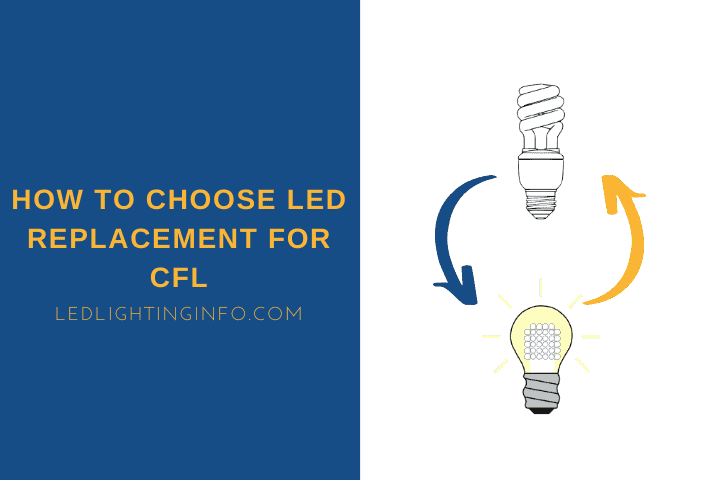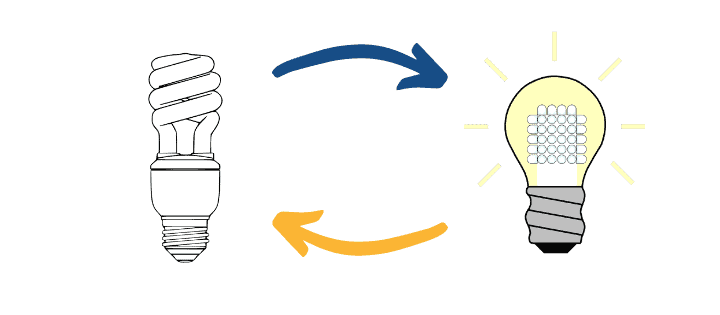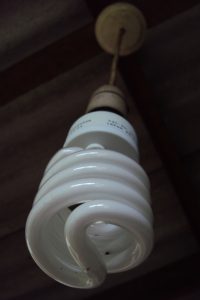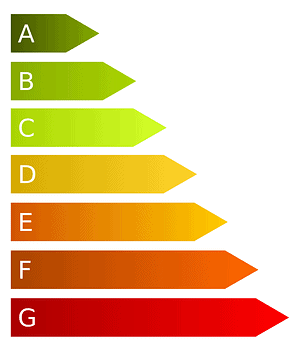As newer and more efficient technologies drive progress around the globe, old obsolete devices and electronics are phased out over time, with some transitionary adjustment time.
Filament bulbs came first. Following that were compact fluorescent bulbs or CFLs for short.
At the time, they were the better technology replacement for the traditional but exhaustively inefficient filament bulbs.
Todays’ market, however, is predominantly catered to LEDs as they are even better replacements than their predecessors and by a large margin.
You can easily choose LED replacements for existing CFL bulbs and fixtures by knowing the correct pin-type, and buying easily available plug-and-play options with the same pin-type but are LEDs instead of CFLs. LED bulbs consume less electricity and also provide better quality light.
Why Is LED Better Alternative to CFL?

There is a big difference in the working technology of both types of bulbs.
The CFL is a phosphorus-coated tube with mercury vapor inside, which gets electrically charged by ballast to produce fluorescence.
The tube is nowadays usually twisted and bent into a shape that resembles a filament bulb.
Due to the mercury vapor inside, dealing with a broken or non-working CFL bulb becomes more difficult.
On the flipside, LEDs are semi-conducting, light-emitting diodes that allow electricity to pass and convert into the light.
When we talk about how long the bulbs last, there is a clear winner. CFLs have an average lifespan of around 10,000 hours.
LEDs lifespan can be up to 50,000 hours. So if you want bulbs that will last much longer, LEDs are the way to go.
But here are some key winning features of LEDs versus CFLs.
LEDs have a powerful feature that really sets them apart from any bulb on the market. The directional capability of an LED light source.
You can focus the light from a focused LED bulb to shine on one spot, and you will not lose much of the light in unwanted directions.
On the other hand, CFL and fluorescent lamps lose a large percentage of light intensity when the beam of light needs to be shaped and directed from a fixture.
There is another feature that LEDs have a clear advantage over.
While many people have shifted to CFLs, they are running into the most apparent trouble with regular CFL bulbs, which is a low CRI or color rendering index.
CRI refers to how accurately a light displays color. At one end of the spectrum, high CRI bulbs will be extremely flattering and make colors’ pop’, but low CRI bulbs will deliver dull, washed-out colors.
As a general rule of thumb, you should aim for a minimum CRI of 80. Though the closer to 100, the better.
CFL bulbs generally have low CRI, and therefore they don’t show the actual colors. Usually the CRI of CFL bulbs ranges between 70 to 80, still not bad but LEDs offer much better experience.
Imagine having low CRI bulbs in your bathroom or vanity, and getting ready with washed out looking makeup and clothes.
The end result will just not be what you were going for.
Converting From CFL To LED: Main Watchouts
There are a few things to know before you order a big batch of LEDs to replace your CFLs.
If you’re a hardware store lover, you probably like to physically go and check bulb options before purchasing one, even if you eventually buy it online.
In that case, it is best practice to take your old bulb along to compare bases and bulb size and type to fit into existing fixtures that you have.
CFL bulbs are a little trickier to replace with LED bulbs because you have to make sure you have the correct base/pin configuration.
However, there are lots of plugs and play options, which are basically plug-in LED replacement bulbs that can quickly go into the existing CFL fixture you are using, without changing the ballast.
Alternatively, you can use the converter plug (Amazon) to convert pin base into the classic crew base.
Always be careful about the voltage indicated on the bulbs. The voltage on the CFL and LED replacement bulb should obviously match.
LED plug-in replacements by some manufacturers have universal voltages (120V-277V) for flexibility.
Surprisingly, CFL fixtures only allow a specific wattage, as indicated by the fixture. Therefore the replacement bulb must match that.
The reason for this is that the CFL bulb itself contains the ballast that provides a quick surge of high power to start the arc between the bulb’s two electrodes and then reduces the voltage to keep it running at a steady current.
Make sure to check the CFL ballast recommendation for the wattage required for the bulb.
The hidden problem with CFLs is that they emit a lot of ultraviolet (UV) and infrared (IR), and this can be damaging to fabric or delicate materials used in certain fixtures.
So if you have fancy fixtures, or even artwork hung around the area that could have gone bad, now is the time to get some LED replacements to save that decor.
Another small thing you need to note is the orientation of the original bulb in the fixture, which is called the mounting, and it can be vertical or horizontal.
Initial Cost of Buying LED vs Fluorescent Lights
LED lamps used to be very costly, but the high demand and constant innovations have made the price very affordable.
I am assuming you are buying for your home, so I’m going to use CFL lamps for this comparison (if you are looking for fluorescent light bulbs, they cost around $10 each).
A LED bulb can cost you around $8 while a CFL bulb will only cost you $3.
But, you should not take this at face value as there are is one thing you should take note of.
Remember LED bulb can last for up to 50,000 hours while a CFL bulb can only last up to 10,000 hours. Which means, you would need two CFL bulbs to last as long as one LED bulb.
Clearly, the initial cost of LED is justified as a more beneficial investment.
CFL to LED Fixture Compatibility
CFL base types can be a little tricky to figure out, and it takes a little reading ahead to figure out which bulb would be the correct replacement.
Generally speaking, plug-in CFLs bulbs use a pin type socket, as opposed to a screw and thread socket used in LEDs or traditional bulbs.
Depending on the shape of the CF tube, there can be 2 or 4 pin CFL bulbs, and so will have matching sockets with that many holes.
On the other hand, there are also commonly available screw-type base CFL bulbs.
The pin type CFLs have an identifying code that mentioned its tube shape, (T = tube, Q=Quad, TR = Triple), the wattage of that bulb (9W, 26W, 32W), the number of pins (usually d for 2 pins and q for 4 pin), and finally the arrangement of the pins or base designation (G, GX, etc.).
So for example, there is a bulb with the indication T4 G24q-1.
In this case, T4 represents the shape, which is tube and number represents the number of tubes which is 4.
The second part of the code G24q-1 is the type of base. As you can see it contains letter q at the end which indicates that the base has got 4 pins.
Now the important bit to keep in mind is the number at the end -1. You can have same prefix but the different ending 1, 2, 3, or 4.
The key thing to remember is that they are not compatible with each other, and the higher number means the bigger wattage of the bulb.
The kind of base or pin-type does not affect or tell us about the wattage. It is only the figure next to the W that quantifies the wattage of the bulb.
However, the socket that is installed will only allow one kind of bulb to be inserted. The bulb’s wattage is dependent on the socket.
The light output or the brightness, also known as lumens is either mentioned separately on the specifications, or you can see the table below for a quick reference.
How Much Power Does LED Use Compared to Fluorescent Light?
For a specific lumens, the amount of power required by CFL and LED bulbs are different.
Obviously, both require less power than the incandescent bulb.
So which one is better? We can look at it from two ways.
One is to see how much lumens a bulb will produce given a certain number of wattage. So if we were to use 30W bulbs, the LED one will provide 2238 lumens and the CFL will provide 1901 lumens.
LED gives you 74.6 lumens per watt. CFL gives you 63.3 lumens per watt.
That shows you that generally LED bulbs are more efficient.
Fun fact: LED lighting company Cree managed to produce a record-breaking 303 lumen per watt LED. It should be noted however that this was achieved in a lab. The commercial product with this kind of efficiency will no doubt be available soon enough.
Wattage Equivalent
Take a look at this table that shows the wattage you need for equivalent light output or lumens in each bulb. I have included incandescent bulbs because people still look at the wattage of filament bulbs to figure out how bright that light would be.
General equivalents are:
| Luminous Flux (LM) | Incandescent | CFL | LED |
|---|---|---|---|
| 400 Lumens | 40 W | 9 W | 7 W |
| 800 Lumens | 60 W | 13 W | 9 W |
| 1,600 Lumens | 100 W | 23 W | 19 W |
LED Replacement Options For CFL Fixtures
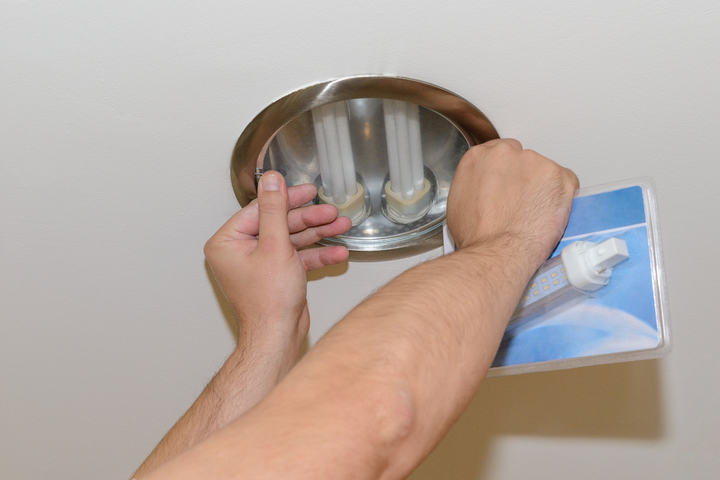
Some LED replacement plug-ins (Amazon) have the capability to be ballast compatible. You essentially purchase them, plug them into your existing CFL socket, and you are good to go!
The other type of LED replacements requires a rewiring of the fixture to remove the existing ballast function called bypass LEDs. While the pin-type socket does not change, the bulbs are now LED.
If you are opting to bypass, that is to remove the ballast from your wiring and fixture, then you have another option that can open a whole lot of screw type bulbs for you to use.
You can plug a pin-to-screw type converter (Amazon) into your socket to allow any screw type bulb to be installed into the previously pin-type CFL only socket.
The final option is to change the fixture from the base and wiring if you don’t want to deal with the various pin types and base types. This is especially easy to do with can or recessed lighting (Amazon).
Final Words
Now that you’ve made the decision to phase out your CFL bulbs for LEDs, this little guide should serve as a good starting point to start purchasing your new devices.
Have you been using CFLs and decided it is time to get something more energy efficient?
Are there other reasons you have considered changing your CFLs for LEDs?
Looking for an LED bulb but not sure what type you need?
Check out my free bulb picker and select the right bulb within few clicks.

